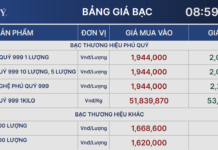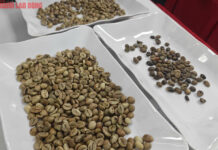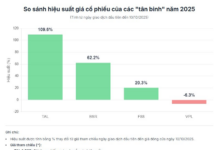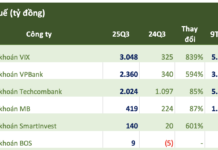Information provided at the Tra Vinh Wax Coconut – 100 Years of Formation and Development workshop, organized by the Department of Agriculture and Rural Development of Tra Vinh on August 26, as part of the Festival 100 Nam Dua Sap Tra Vinh (Tra Vinh Wax Coconut Festival).

Workshop venue.
Tra Vinh is home to the second-largest coconut area in Vietnam, with over 27,300 hectares, of which approximately 1,207 hectares are wax coconut (also known as ice coconut or thick-fleshed coconut), mainly in Cau Ke district (over 90%). However, only 62 hectares meet the VietGAP standard.
Mr. Nguyen Trung Hoang, Vice Chairman of the Tra Vinh People’s Committee, said that wax coconut has thicker, softer, more fragrant, and fattier flesh compared to regular coconut varieties, and its water is more concentrated. This makes wax coconut quite expensive, and it is a unique product of the locality.
According to the Department of Agriculture and Rural Development of Tra Vinh, wax coconut has been present in Tra Vinh since 1924, but it was not until 2000 that it officially became widely known and became a specialty. Along with that, the price of wax coconut has increased, becoming the most expensive coconut in Vietnam, currently ranging from 70,000 to 120,000 VND per fruit. On average, each hectare of wax coconut yields a stable income of 320 million VND per year for regular wax coconut and 770 million VND per year for embryo-cultured wax coconut, with corresponding profits of 270-700 million VND per year, 4-10 times higher than that of regular coconut.
However, the local Department of Agriculture and Rural Development acknowledged that the current wax coconut growing area is scattered and small-scale, leading to easy cross-breeding and degeneration of the variety. The rapid expansion of wax coconut areas without proper planning may result in oversupply and subsequent challenges in finding buyers. At present, fresh wax coconut accounts for the majority of sales, with few enterprises investing in the production of wax coconut-derived products.

Tra Vinh Wax Coconut.
Despite having the advantage of a uniquely delicious fruit, the Tra Vinh agricultural sector acknowledged that wax coconut has not yet achieved price stability and widespread market reach. There are very few cooperative production models, such as cooperatives, and there is a lack of handicraft villages and processing facilities to fully exploit the potential of wax coconut in combination with tourism.
Mr. Cao Ba Dang Khoa, Secretary-General of the Vietnam Coconut Association, compared the prices of different coconut varieties, with the average price of dau coconut (local coconut) ranging from 6,000 to 8,000 VND per fruit, xiem coconut (hybrid coconut) from 7,000 to 9,000 VND per fruit, while wax coconut can reach up to 140,000 to 160,000 VND per fruit, which is 20 times higher than regular coconut varieties. Even if the wax coconut does not have a high degree of sap, the average price is still 20,000 to 30,000 VND per fruit, which is 2-3 times higher than regular coconut. The profit obtained from wax coconut is also very high, averaging about 120 million VND per hectare per year, while regular coconut only yields about 20 million VND per hectare per year.
“Despite its high value, wax coconut has untapped potential in Tra Vinh and lacks the capacity to expand to other regions in Vietnam. As a result, it has not become a key crop or a specialty fruit of the country, nor has it received national brand recognition or made significant contributions to export turnover,” said Mr. Khoa.
According to Mr. Khoa, there is still a large market for wax coconut both domestically and internationally. To promote wax coconut products, he suggested that Tra Vinh implement policies to encourage investment in linkage chains, enhance brand promotion, stimulate production and consumption, and research to improve the yield and quality of wax coconut, thereby creating a unique product in the market.


































